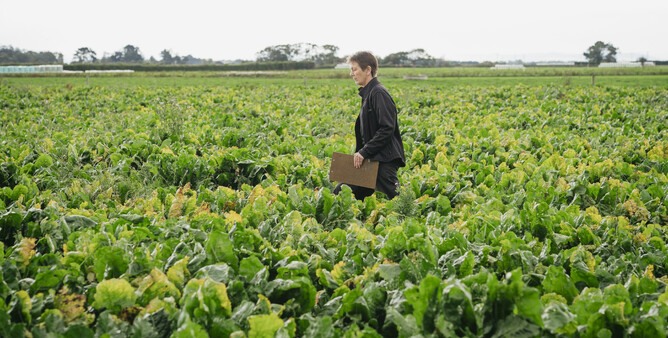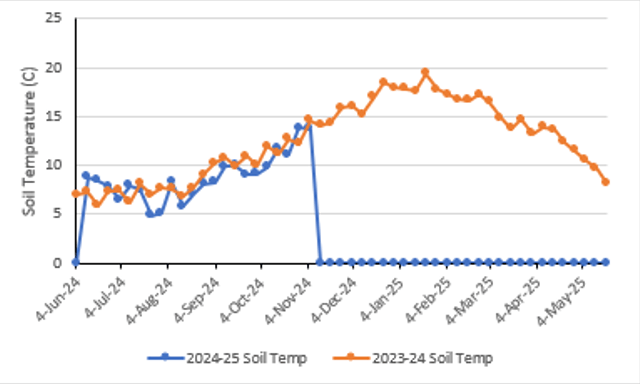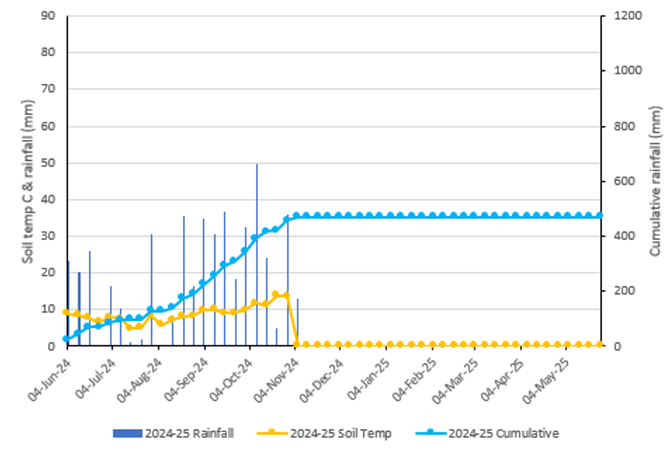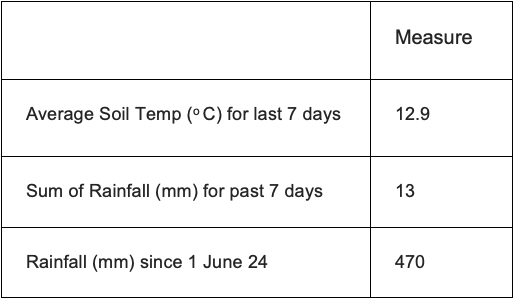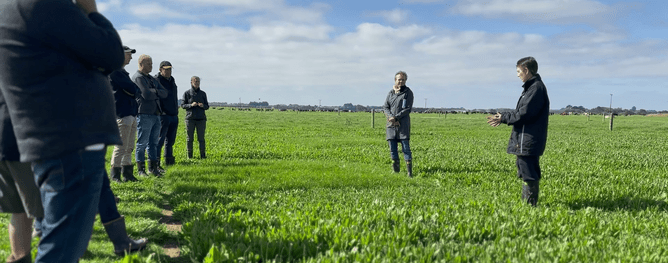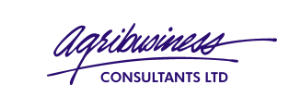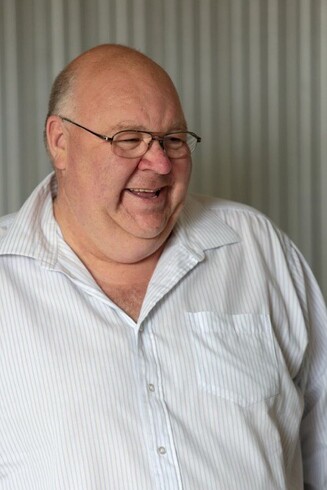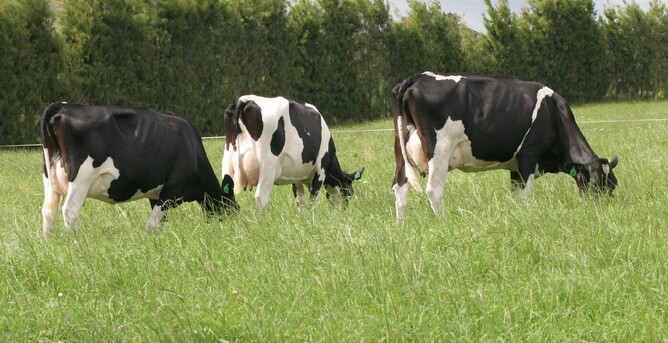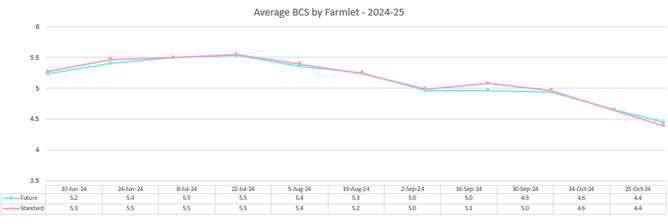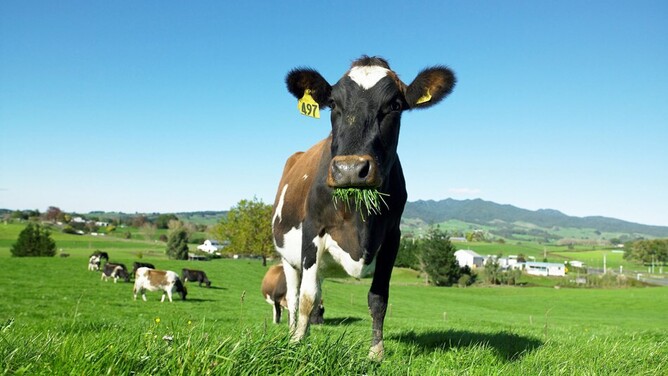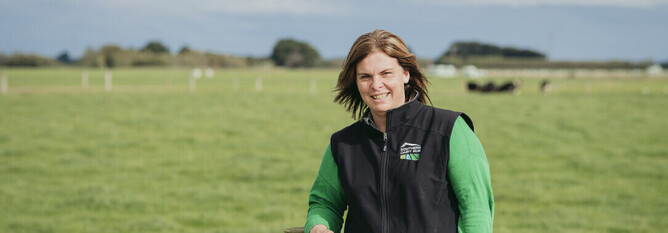Straight from the Hub: GM Andrea Dixon’s insights
Kia ora and welcome to our summer newsletter!
We’ve had a busy few months, navigating the challenges of September’s wet weather while making great progress on our exciting initiatives and trials. People are at the heart of our efforts, and I really want to express my gratitude to our dedicated team for their commitment and hard work, and to the wider community for your ongoing support.
I’m excited to share some of our recent highlights and what we’re working towards as we head into summer.
Navigating a Tough Spring Together
The Southern region has faced one of the most challenging springs yet, with persistent wet conditions putting pressure on sodden ground and making day-to-day farming especially difficult. Interestingly, while our year-to-date rainfall is similar to last season (see graphs below), the cumulative wetness from last season’s end has kept the ground waterlogged, adding a unique set of challenges. However, our rural community has been incredibly supportive, with people reaching out to share ideas and lend a hand. Our team and I attended the DairyNZ event to connect, share strategies, and start planning for better weather ahead. A number of suppliers also hosted events, giving farmers a chance to connect and take a brief break off-farm.
Note: as at 6/11/24
Preparing for Summer with Grass and Feed Focus
The extended balance date has delayed some of our cultivation, and getting winter baleage paddocks back into the round has been a priority. With around 32 hectares to stitch, we’re working hard to ensure that grazing rotation aligns with planting needs, and our goal is to have strong grass growth moving into summer. Body condition score (BCS) has been a key focus as we approach mating, and despite the tough conditions, our farm team has done an outstanding job maintaining cow welfare. Great work, team!
Adjusting for the Season’s Production Challenges
Production has taken a hit, as is the case for many farms in the region, with current levels sitting 12% behind last year’s figures (11,060 kgms). In response, we’ve adapted our feed strategy to balance in-shed feed with grazing needs and are revisiting our production targets, setting them to 330,000 kgms for the season. Our feed suppliers have been instrumental in helping us meet cow feed requirements during these demanding months, and I’d like to extend a special thanks to them for their support.
We’re looking forward to a more settled summer and continued progress on our goals for the hub. Thank you again for being a part of our journey!
Spring Recovery and Cropping Tips
Some very useful tips from the September newsletter circulated by the local Agribusiness Consultants Ltd here in Invercargill.
With spring’s wet weather mostly behind us, the next couple of months bring an opportunity to focus on recovery. Here are some practical ideas from the Agribusiness team, especially for cropping.
Strategic Cropping Decisions:
Summer Turnips: If they’re not in by November, consider if they’re still worth planting, as late crops can delay pasture recovery.
Winter Crops vs. Grass & Baleage: Shifting to winter crops may help conserve baleage for winter, which could be in limited supply.
Kale or Swedes: For paddocks accessible later, kale or swedes may be a better choice than fodder beet. Factor in lower yields when planning winter feed.
Pasture and Soil Recovery: Assess paddocks, prioritising options like rolling, aerating, and overseeding where needed. Early-season fertilising may also support pasture recovery.
Plan Ahead and Stay Connected: Stay proactive with contractors and keep farm owners informed on budgets and targets. Communication helps ensure smooth recovery as the season progresses.
Lastly, make sure you take time to recharge – it’s been a demanding season for everyone.
Farmers Pay Tribute to Maurice Hardie at AGM
Farmers paid tribute to the late Maurice Hardie at a recent Southland Dairy Hub AGM. Maurice was remembered as a man who didn’t like the limelight but cared deeply about people and Southland’s agricultural sector. Speakers recalled his vision and determination, ability to generate support for local projects, and the immense impact he had on local agriculture.
After returning from several years working in Fiji, Maurice joined the Southland Demonstration Farm Board in 2011. As Chair of the Board, Maurice championed the idea of a demonstration farm to share dairy farming best practices and was critical in negotiations with AgResearch and DairyNZ, securing funding and getting the right structures in place.
As both Dayna Cunningham and Matt Richards noted, without Maurice and the countless volunteer hours he put in, the Southern Dairy Hub wouldn’t exist. Both speakers recalled Maurice as a clever man who was always several steps ahead of others in the room.
While he didn’t shy away from difficult conversations or strong opinions, Maurice was well-liked and was always available to lend an ear.
As Dayna Cunningham recalled fondly, “We talked almost every week. Our conversations were a little bit about work and a lot about politics. Above all, Maurice was a great man, and a great friend."
Maurice died unexpectedly at his home in Winton in September.
Premating Preparation Despite Challenging Weather Conditions
Reproductive performance in our New Zealand dairy herds is hugely important as there aren’t many days between calving and mating for them to get back in-calf again. If cows calve early, recover quickly, and begin cycling earlier, it leads to better in-calf rates.
For more info on how to get your cows in-calf early to get ahead, visit the LIC website
This season at the Hub, like many Southern farmers, we faced challenging conditions due to severe wet weather, which required us to use sacrifice paddocks during the day to help minimise pasture damage. For several weeks leading up to mating, the cows received only 7 kgdm of grass from their 19.5 kgdm total daily feed requirement, with the remainder made up of silage, in-shed feed, and PKE. We focused on doing everything possible to minimise the impact on body condition score (BCS) from calving to mating to support mating success.
The graph below shows the trend in BCS from calving to mating this season. The cows maintained good condition throughout winter, with a slight lift in BCS as they headed into calving in early August.
The above graph shows a significant drop in BCS mainly through October. This, combined with our September LIC herd test information, led us to further separate the mobs, grouping the two- and three-year-olds along with some lighter mixed-age cows into their own mob. Previously, we managed younger animals by adjusting feed and milking times through our Delpro system. However, this season, with fewer herds running, we were able to put them in their own mob. This has reduced pressure on the younger cows and allowed a greater focus on paddock selection, feed, and other needs.
The MINDA graph below shows that some of the two- and three-year-olds are a bit behind where we’d like them to be at the planned start of mating. However, the group average is on target at 4.5–4.6 BCS for two- and three-year-olds and above the industry target of 4 BCS for mixed-age cows. The younger mob will be our main focus group over the next five weeks, as they carry our better genetics, and we want to maximise the number of AB replacement calves from this group.
The DataLive Pre-Mate report graph below shows how well the cows were cycling seven days before mating despite the challenging spring conditions. All groups (first lactation, second lactation, and mixed-age cows) were cycling well. In fact, compared with all cows nationally wearing SenseHub collars, our cows ranked in the top 25% for pre-mate cycling two weeks before PSM. This highlights the positive impact of our BCS focus as we approach the planned start of mating.
The DataLive graph below shows how well first calvers, second calvers, and the whole herd are cycling by days in milk (DIM). Each green bar represents the proportion of all cows in that DIM bin that have cycled, with green symbols/numbers indicating the total that have had a heat, and gold symbols/numbers showing the total that have not. The black line represents first lactation animals, and the purple/blue line represents second lactation animals.
This data shows that, until the 78-98 DIM bin, the first calvers were performing below the rest, while the second calvers outperformed the group as a whole. Generally, we expect heifers to be under the pump, as they’re calving and lactating for the first time and often experience the most social adjustment. What stands out, however, is how well the second calvers performed, as attention is typically focused on supporting first calvers.
What’s our focus through mating?
We’ll continue using the technology to monitor rumination levels and animal health, catching issues early and intervening as needed.
The technology helps guide WHEN to inseminate, allowing us to make better use of sexed straws, which have a shorter breeding window (we’ve added a ‘Breeding Window for Sexed Semen’ to our report).
We’ll focus on using sexed straws on cows that are on their second or later cycle - these cows have a higher chance of conceiving - paired with LIC reporting to target higher genetic merit animals.
The technology enables us to assess the ‘strength’ of a heat, review the cow's history for regular cycles, and confirm heat activity, especially under poor weather conditions.
With real-time updates, we can make quick decisions or adjustments based on changes in rumination levels, health alerts, and other indicators.
As cows peak in milk production, we’ll closely monitor milk production, BCS changes, and ensure they’re well fed to support both conception and early pregnancy, promoting a healthy placenta and fetus.
No single ‘tool’ is more important than another—the best results come from combining all tools available and using the information to make well-rounded decisions.
DataLive is a data analysis platform that produces graphs and reports with national benchmarking and is available through your vet.
Winter supplement planning
As the southern regions move on from a very wet autumn, winter and spring, it is timely to consider the role of conserved feed in our dairy systems. With many farmers moving away from forage crops to a predominantly baleage or silage diet for wintering, the quality of conserved feed becomes much more important. Rather than its primary purpose as a fibre source with crops, conserved feed in baleage and off paddock wintering systems must meet all the animals’ nutrient requirements.
At SDH we have been monitoring the quality of our baleage and silage, observing a significant range in quality in both what we have made, and what has been purchased, demonstrating that all dry matter is not created equally.
Of the 48 baleage samples we analysed during autumn and winter 2024, the average crude protein content was 14.6% i.e. more than the 12% required for pregnant, non-lactating dairy cows. However, the range was from 8.5 to 23.8%, and 33% of the samples were less than 12%. Similarly, the average ME of the samples was 9.8 MJME/kg DM, but the range was 6.5 to 11.8 MJME/kg DM. Dry matter percentage ranged from 22.7 to 69% across the different bales and batches.
Knowing the quality of our baleage has enabled SDH to target different batches to different classes of livestock based on their nutrient requirements and the composition of the diet. This has allowed us to allocate better quality bales to those in baleage wintering systems or to milking cows, and lower quality to those on crop where supplement only makes up 20-30% of the diet, or to animals where BCS gain is not required.
There are many factors that will impact the quality of these conserved feeds with many of these under our control:
Pasture mass prior to harvest
Previous management and its impact on the quality of the pasture being conserved
Pasture composition
Weather and ground conditions during the conservation process
Wilting period
Use of inoculants
Key steps to making high quality baleage and silage:
Harvest at the correct time. Harvest no later than 35-40 days after the last grazing, or when a maximum of 10% of the ryegrass seed heads have emerged.
Wilt to at least 25% dry matter for stacked silage or 30% dry matter for bales. Wilting concentrates the sugar and increases the chance of a good fermentation. It also decreases the risk of silage effluent losses. Silage effluent contains valuable nutrients and is also a powerful agricultural pollutant. Where possible, wilt within 24 hours.
Note: some balers may require a higher dry matter for efficient baling.
Avoid getting soil in the silage. Avoid effluent application to paddocks that have been closed for silage. Make sure the cutter bar does not scalp the paddock.
Use a quality silage inoculant. Research has shown inoculants can give good returns because they reduce fermentation losses and produce higher quality silage.
Compaction and sealing. For stacked silage, spread into 100-150 mm layers and compact until the surface is firm. Use a high-quality plastic cover and weigh it down with tyres that are touching. Seal the edges with sand or lime. For baled silage use quality plastic and the recommended number of wraps.
Careful storage and feed-out management. Handle bales carefully to avoid puncturing the wrap. Mend holes that develop in the silage cover or bale wrap immediately. Feed out stacked silage carefully – do not loosen the silage face more than you need.
While the sector has generally focused on dry matter requirements when completing feed budgets and diet allocation, having confidence the diet is meeting the energy, protein and mineral requirements of the animals is equally important, especially if BCS or liveweight gain is required. DairyNZ’s Feed Checker Calculator is a useful resource to help calculate nutrient requirements relative to diets on offer.
Visit www.dairynz.co.nz/tools/feed-checker/www.dairynz.co.nz/tools/feed-checker/ to access.
Achieving high quality conserved forages requires good planning and if using contractors, good relationship management. The cost of getting it wrong can be high.
Thanks for reading. Stay tuned for more updates or visit www.southerndairyhub.co.nz to find out more.
Kind regards,
Andrea Dixon (General Manager)

